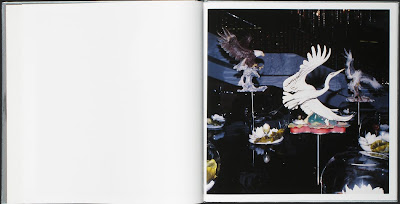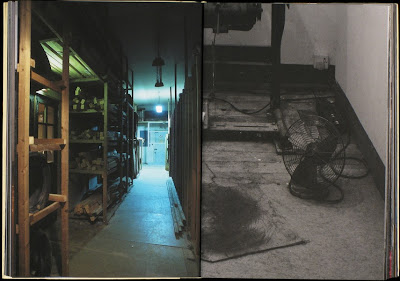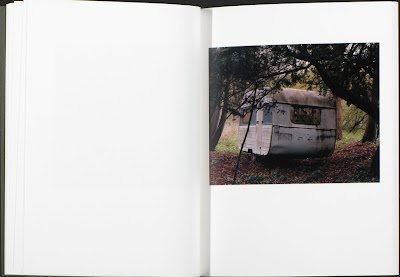Three Acts. By John Divola. Essay by David Campany, interview by Jan Tumlir. Aperture, 2006. 144 pp., illustrated throughout, 11x9,25". Images from here.
Book description:
"In 1973, artist John Divola began the first of three highly ambitious and original bodies of work that together form this publication.
The Vandalism series comprises black-and-white photographs of interiors of abandoned houses. Entering illegally, Divola spray painted expressive markings in the forms of dots, lines, and grids, creating a series of conceptual gestures that referenced 'action painting' as readily as the graffiti that was fast becoming a cultural phenomenon.
The following year, Divola began the Los Angeles International Airport Noise Abatement series, photographing a condemned neighborhood bought out by the airport to serve as a noise buffer for new runways. Unlike the Vandalism series, where the artist's own intervention was at the crux of the project, here he focused his obsessive eye on unsanctioned entries by vandals who had absconded long ago. An extensive catalog of break-ins, the photographs record the evidence of violent entries: shattered windows, doors torn from hinges, a crowbar resting in the jamb of a door pried open.
The final installment in this book, the Zuma series, is the artist's documentation of the destruction of an abandoned beachfront property. While employing similar strategies of painting and intervention, the Zuma images add variation and complexity to Divola's established themes as they incorporate color, elements of nature, and meditation on change. These cyclical images skillfully juxtapose romantic skies and sunsets with a seaside structure that, frame by frame, deteriorates into ruin as it is vandalized by the artist and others who eventually set it on fire.
Divola's art practice shares a tradition with conceptual artists such as Bruce Nauman, whose photographs are considered to be performance or sculpture, and Robert Smithson, who used photography to investigate the built environment.
Divola's stunning body of work uses photography in a way that exceeds the medium's essential capacity to describe. Divola puts this idea succinctly: 'My acts, my painting, my photographing, my considering, are part of, not separate from, this process of evolution and change. My participation was not so much one of intellectual consideration as one of visceral involvement'."
I have previously also featured the wonderful The Green of This Notebook by John Divola.







































